Special Report
25 Richest Countries in the World
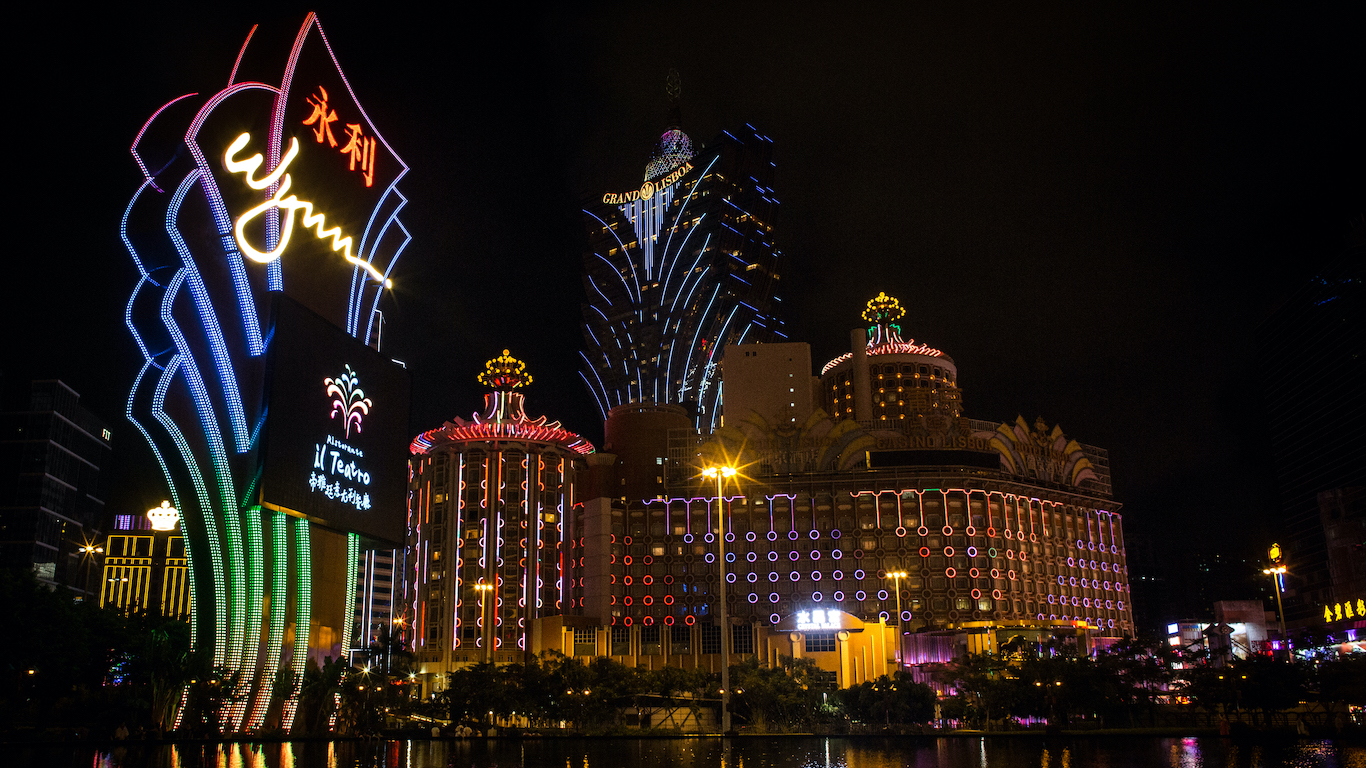
Published:
Last Updated:

Gross national income, or GNI, represents the sum total of money earned by a nation’s people and businesses within a given year. Unlike GDP, GNI also measures income earned by corporations based in a given country but operating outside of that country’s borders. On a per capita basis, GNI is a useful measure for assessing the wealth of a country’s population.
Using data from the World Bank, 24/7 Wall St. reviewed the GNI per capita of over 150 nations to identify the 25 richest countries. GNI per capita figures are based on purchasing power parity and are in constant 2011 international dollars. We also included life expectancy at birth from the World Bank, as well as GDP from the International Monetary Fund. Population and life expectancy at birth are also from the World Bank and are for the most recent period available. GNI per capita data ranges from 2016 to 2018.
Many of the wealthiest 25 countries in the world have complex and diverse economies, but a number of the countries on this list owe a great deal of their national wealth to a single commodity — petroleum. Several of the countries on this list are Middle Eastern countries that are highly affluent thanks to their oil reserves. These are the 15 countries that control the world’s oil. People living in wealthier nations tend to have better access to healthcare, a greater variety of healthy options related to diet and lifestyle, and a more reliable and advanced healthcare infrastructure. And partially as a result, they tend to live relatively long, healthy lives. Life expectancy at birth in a number of the countries on this list exceeds the global average of 72.4 years by more than a decade. These are the countries where people live the longest.
Click here to see the 25 richest countries in the world
Click here to see the 25 poorest countries in the world

25. France
> GNI per capita: $39,935
> 2018 GDP: $2.8 trillion (7th out of 208 countries)
> Population (2018): 67.0 million
> Life expectancy at birth in 2016: 82.5 years
France is one of several countries in Western Europe to rank on this list. With a diverse and technologically advanced economy, France’s exports were worth over half a trillion dollars in 2017. Over 10% of exports were planes, helicopters, spacecraft, and aircraft parts.
Wealthier countries tend to have better health care systems and healthier populations. In France, life expectancy at birth is 82.5 years, about 10 years longer than the global average.
[in-text-ad]
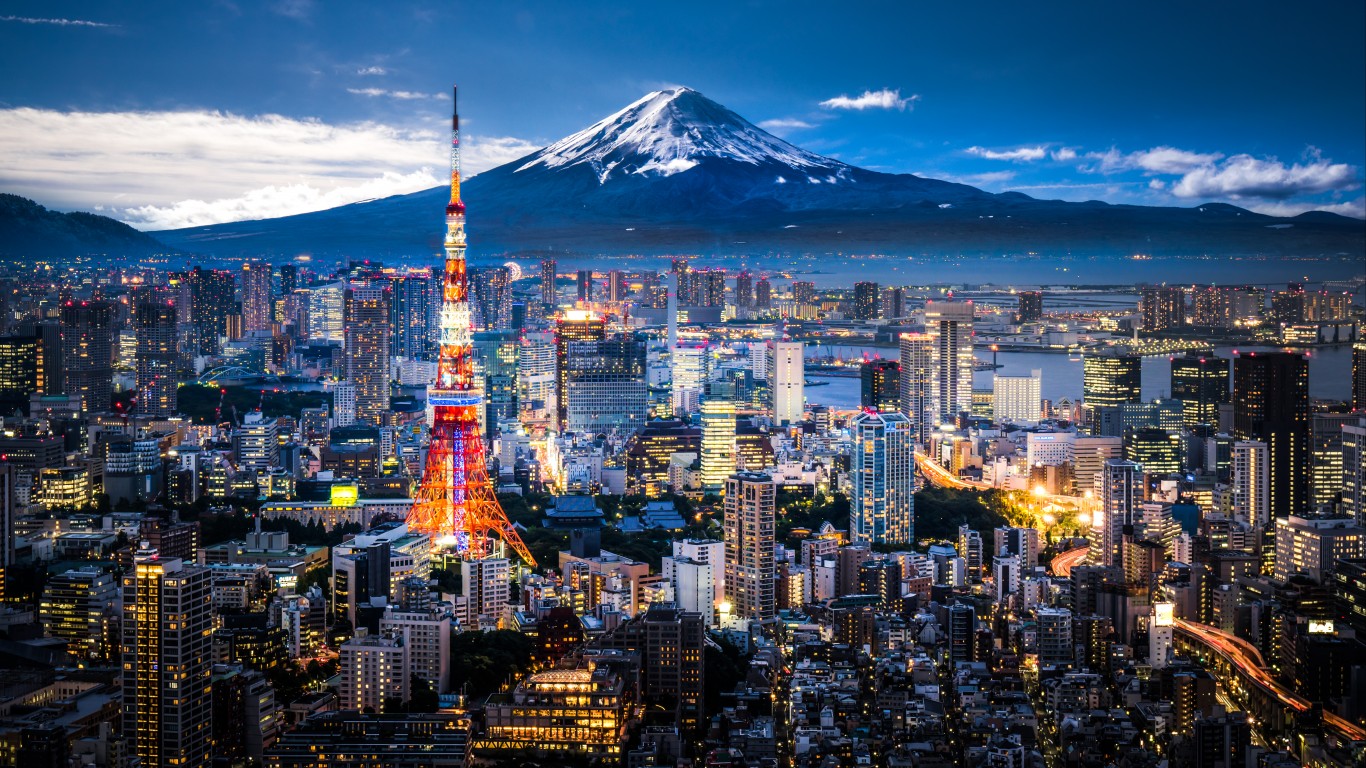
24. Japan
> GNI per capita: $40,343
> 2018 GDP: $5.0 trillion (3rd out of 208 countries)
> Population (2018): 126.5 million
> Life expectancy at birth in 2017: 84.1 years
Japan’s $5 trillion economy is the third largest in the world, trailing only that of the United States and China. In the wake of WWII, Japan’s rapid economic expansion was fueled largely by its automotive and electronics industry. Japan is home to several multinational automakers, including Nissan, Honda, and Toyota, the largest car manufacturer in the world by total production. About 20% of the country’s $694 billion in exports in 2017 were cars and vehicle parts.
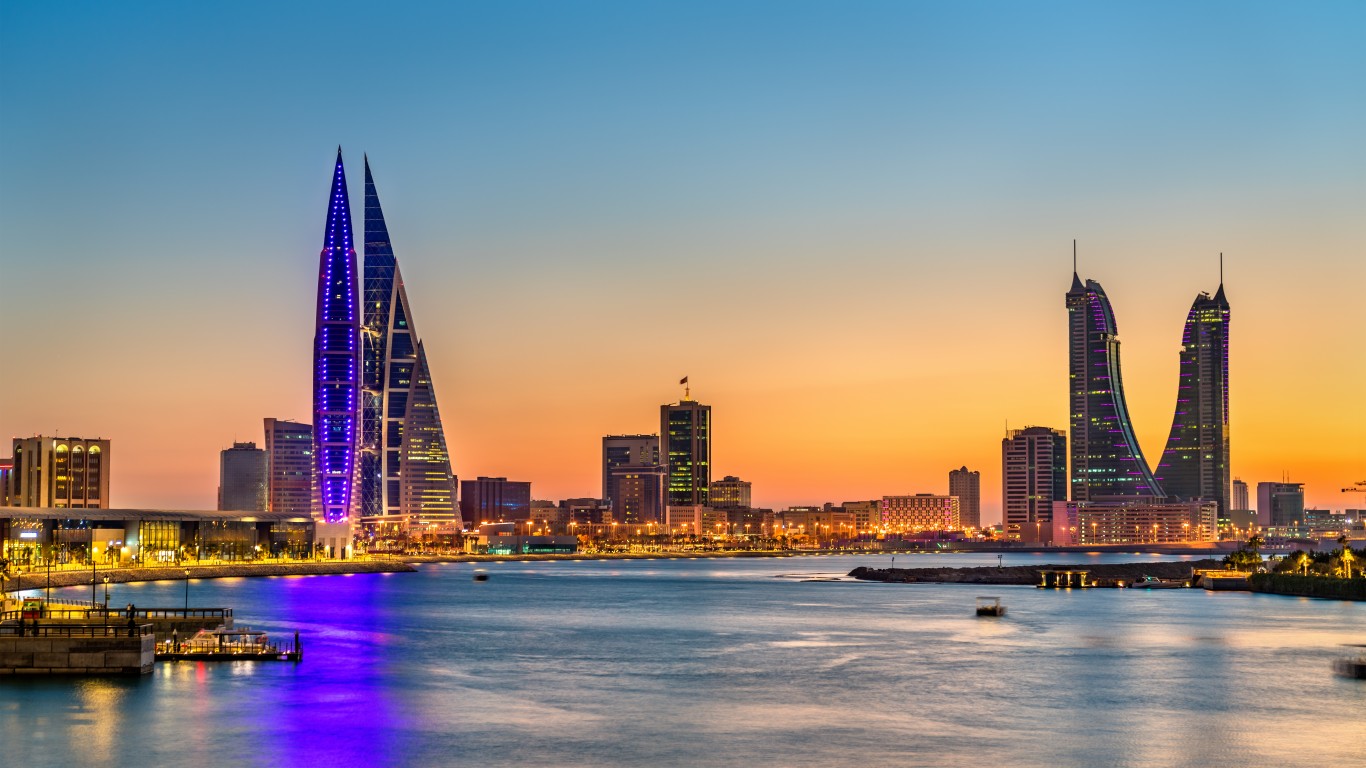
23. Bahrain
> GNI per capita: $41,645
> 2018 GDP: $37.7 billion (100th out of 208 countries)
> Population (2018): 1.6 million
> Life expectancy at birth in 2017: 77.0 years
Bahrain is an island nation in the Middle East. It was among the first Gulf states to discover oil. Unlike many other oil-rich countries in the region, Bahrain has a relatively diverse economy. Still, oil accounts for over half of the country’s total merchandise exports.
Abuse of power for private gain is likely hindering potential prosperity in Bahrain. According to Transparency International, a nonprofit corruption watchdog, Bahrain is the most corrupt country on this list.

22. Finland
> GNI per capita: $41,814
> 2018 GDP: $274.0 billion (45th out of 208 countries)
> Population (2018): 5.5 million
> Life expectancy at birth in 2016: 81.4 years
Based on GNI per capita, or the total amount of money earned by a nation’s people and businesses divided by the population, Finland is the 22nd wealthiest country in the world. Like many countries on this list, Finland has a highly diversified economy, exporting raw materials as well as manufactured electronics, vehicles, and other machines.
Like many of the wealthiest countries, corruption is not a major problem in Finland. According to Transparency International, Denmark and New Zealand are the only two countries with less corruption than Finland.
[in-text-ad-2]

21. Belgium
> GNI per capita: $43,300
> 2018 GDP: $531.8 billion (24th out of 208 countries)
> Population (2018): 11.4 million
> Life expectancy at birth in 2016: 81.4 years
Belgium — which shares a border with four other countries on this list — is one of several Western European nations to rank among the wealthiest countries in the world. With a GDP of over half a trillion dollars, Belgium ranks among the world’s 25 largest economies. The country’s economy is diversified and heavily based on trade.
As is the case in most wealthy countries, Belgium has a relatively healthy population. Life expectancy at birth in Belgium is 81.4 years, nine years longer than the global average of 72.4 years.

20. Canada
> GNI per capita: $43,621
> 2018 GDP: $1.7 trillion (11th out of 208 countries)
> Population (2018): 37.1 million
> Life expectancy at birth in 2017: 82.2 years
Along with the United States, Canada is one of only two North American countries to rank among the wealthiest in the world. Canada has one of the largest proved oil reserves of any country in the world — and unlike many other oil rich nations, Canada also benefits from a diverse economy. In addition to crude and refined petroleum, cars and vehicle parts ranked among Canada’s top exports in 2017.
[in-text-ad]
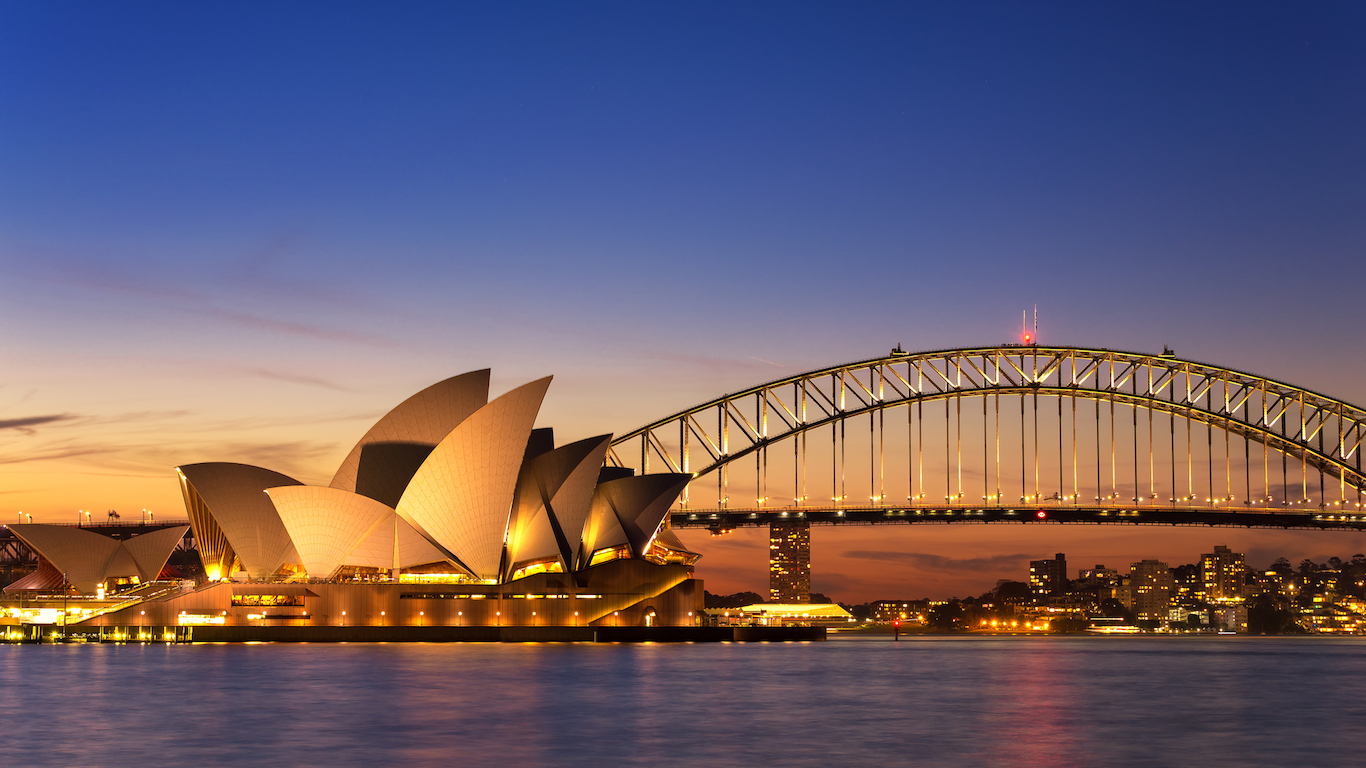
19. Australia
> GNI per capita: $44,097
> 2018 GDP: $1.4 trillion (14th out of 208 countries)
> Population (2018): 25.0 million
> Life expectancy at birth in 2017: 82.5 years
Australia’s GNI per capita of $44,097 is higher than that of all but 18 other countries. A well-educated population is one of the hallmarks of a wealthy nation, and in Australia, 31.7% of adults have a college education, one of the highest educational attainment rates in the world.
Though Australia shaped its economic policy based on European and North American models, today, the vast majority of its trading partners are in Asia.

18. Austria
> GNI per capita: $45,375
> 2018 GDP: $455.7 billion (28th out of 208 countries)
> Population (2018): 8.8 million
> Life expectancy at birth in 2016: 81.6 years
Austria is a landlocked country in Central Europe that shares a border with two other countries on this list — Germany and Switzerland. Austria’s $455.7 billion economy is larger than the GDPs of certain countries that are home to many times more people. The country’s economy is heavily diversified, and its $148 billion in exports in 2017 included medicine, cars, and other complex machinery, in addition to precious metals and agricultural products.

17. Germany
> GNI per capita: $46,438
> 2018 GDP: $4.0 trillion (4th out of 208 countries)
> Population (2018): 82.9 million
> Life expectancy at birth in 2016: 81.0 years
The largest economy in Europe and one of the largest in the world, Germany has a GDP of $4.0 trillion, which trails only superpowers like the United States and China as well as Japan. The wealth and relative economic strength of the German economy is important to the overall well-being of the European Union, particularly as the United Kingdom continues to work out its planned withdrawal. Germany is the largest economic contributor to nations within the union.
[in-text-ad-2]

16. Sweden
> GNI per capita: $47,937
> 2018 GDP: $551.0 billion (23rd out of 208 countries)
> Population (2018): 10.2 million
> Life expectancy at birth in 2016: 82.3 years
All three Scandinavian countries rank among the 25 wealthiest countries in the world, and Sweden, the most populous of the three, ranks last, with a GNI per capita of $47,937. Like most of the wealthiest countries in the world, Sweden has a high life expectancy at birth of 82.3 years, nearly four years higher than that of the United States.

15. Denmark
> GNI per capita: $48,852
> 2018 GDP: $352.1 billion (39th out of 208 countries)
> Population (2018): 5.8 million
> Life expectancy at birth in 2017: 81.0 years
Public sector corruption can discourage investment, reduce efficiencies, unfairly alter market forces, and generally reduce prosperity in any country. According to Transparency International, Denmark ranks as the least corrupt country in the world. Denmark has a service-based economy with one of the most generous social security systems in the world. Wealthy countries like Denmark tend to have healthy populations. Life expectancy at birth in the Nordic nation is 81 years, nearly nine years above the global average.
[in-text-ad]
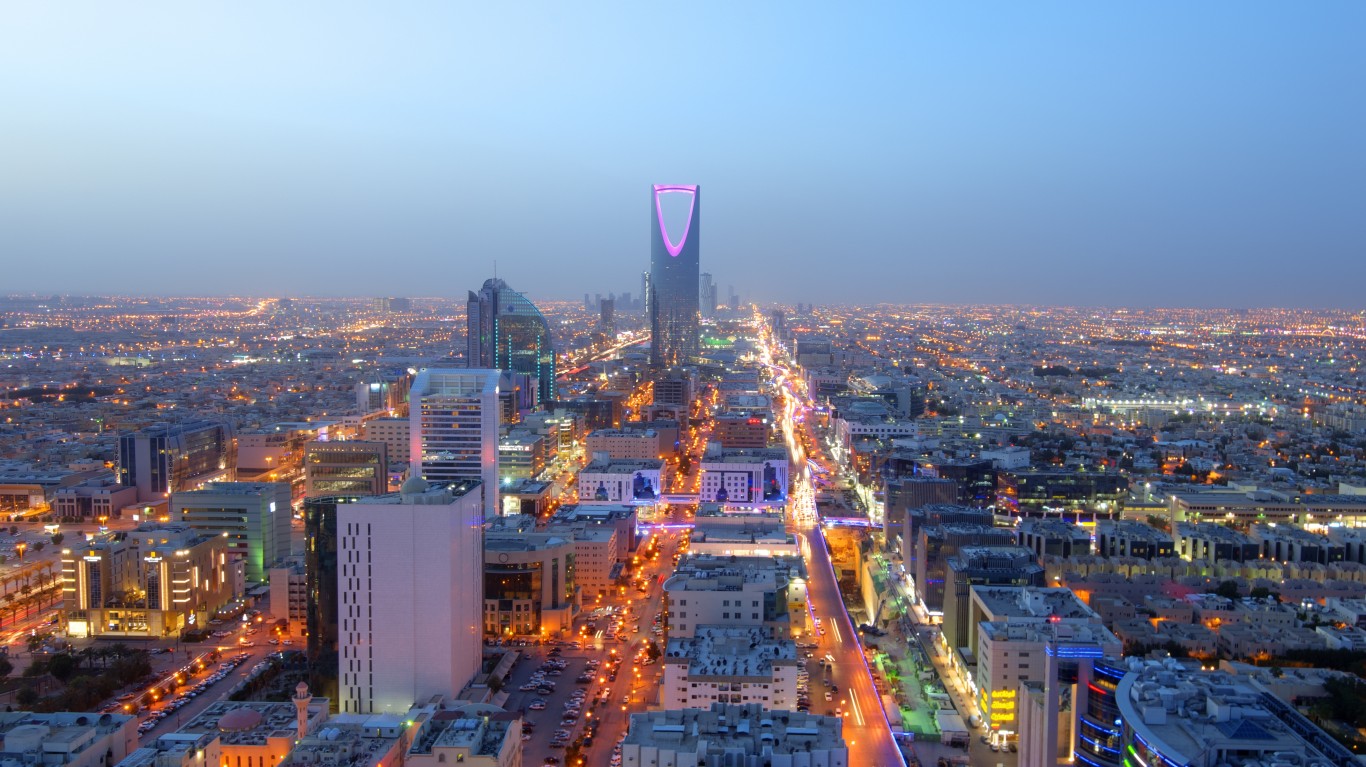
14. Saudi Arabia
> GNI per capita: $49,338
> 2018 GDP: $782.5 billion (19th out of 208 countries)
> Population (2018): 33.7 million
> Life expectancy at birth in 2017: 74.9 years
Saudi Arabia is one of several nations in the Middle East that owes much of its wealth to oil. The Kingdom controls roughly 16% of the world’s proven petroleum reserves. Petroleum exports account for almost three-quarters of the nation’s exports and for 42% of its GDP. Saudi Arabia’s reliance on oil to sustain its wealth has meant that the lower oil prices over the past five years have taken a toll on the economy.
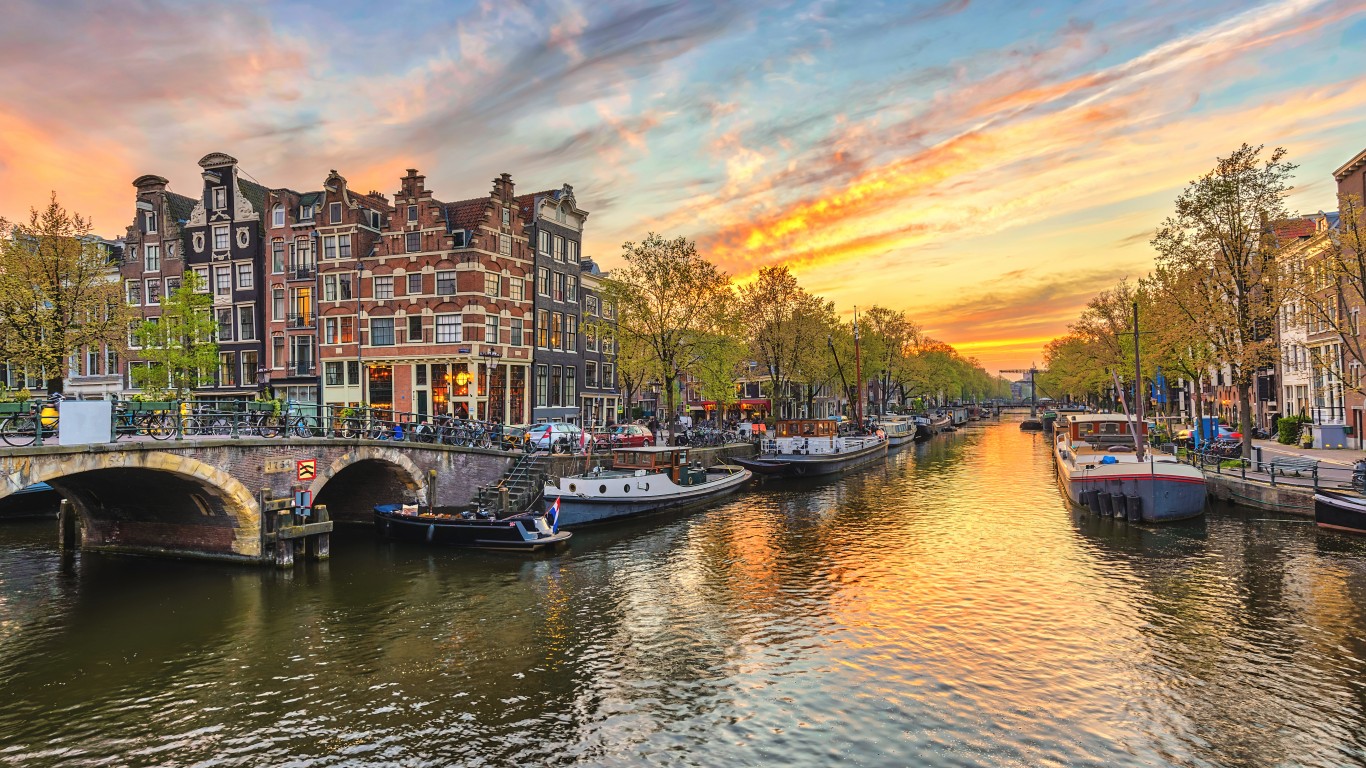
13. Netherlands
> GNI per capita: $50,285
> 2018 GDP: $913.7 billion (18th out of 208 countries)
> Population (2018): 17.2 million
> Life expectancy at birth in 2016: 81.6 years
The Netherlands is one of the few countries in the world with a GNI per capita of over $50,000. Part of the Netherlands’ wealth comes from its highly productive agriculture industry. The relatively small nation is the second largest exporter of food in the world, behind only the United States, which is more than 250 times larger in terms of landmass.

12. Ireland
> GNI per capita: $52,322
> 2018 GDP: $382.5 billion (33rd out of 208 countries)
> Population (2018): 4.9 million
> Life expectancy at birth in 2017: 82.0 years
Ireland was one of the hardest hit economies during the global financial crisis of 2007 and 2008. But the European nation has rebounded in the following years, recording GDP growth of over 7% in 2018. Trade is a major component of the Irish economy, with the total value of exports and imports in Ireland in 2018 being worth more than double total Irish GDP that year.
[in-text-ad-2]

11. United States
> GNI per capita: $55,351
> 2018 GDP: $20.5 trillion (1st out of 208 countries)
> Population (2018): 327.2 million
> Life expectancy at birth in 2016: 78.5 years
The United States is the largest economy in the world, yet it does not quite break the top 10 for GNI per capita. The U.S. economy has experienced years of uninterrupted growth, but compared to most of the highly affluent nations on this list, wealth in the United States is distributed relatively unevenly. As a result, the nation has one of the highest poverty rates among wealthy countries.
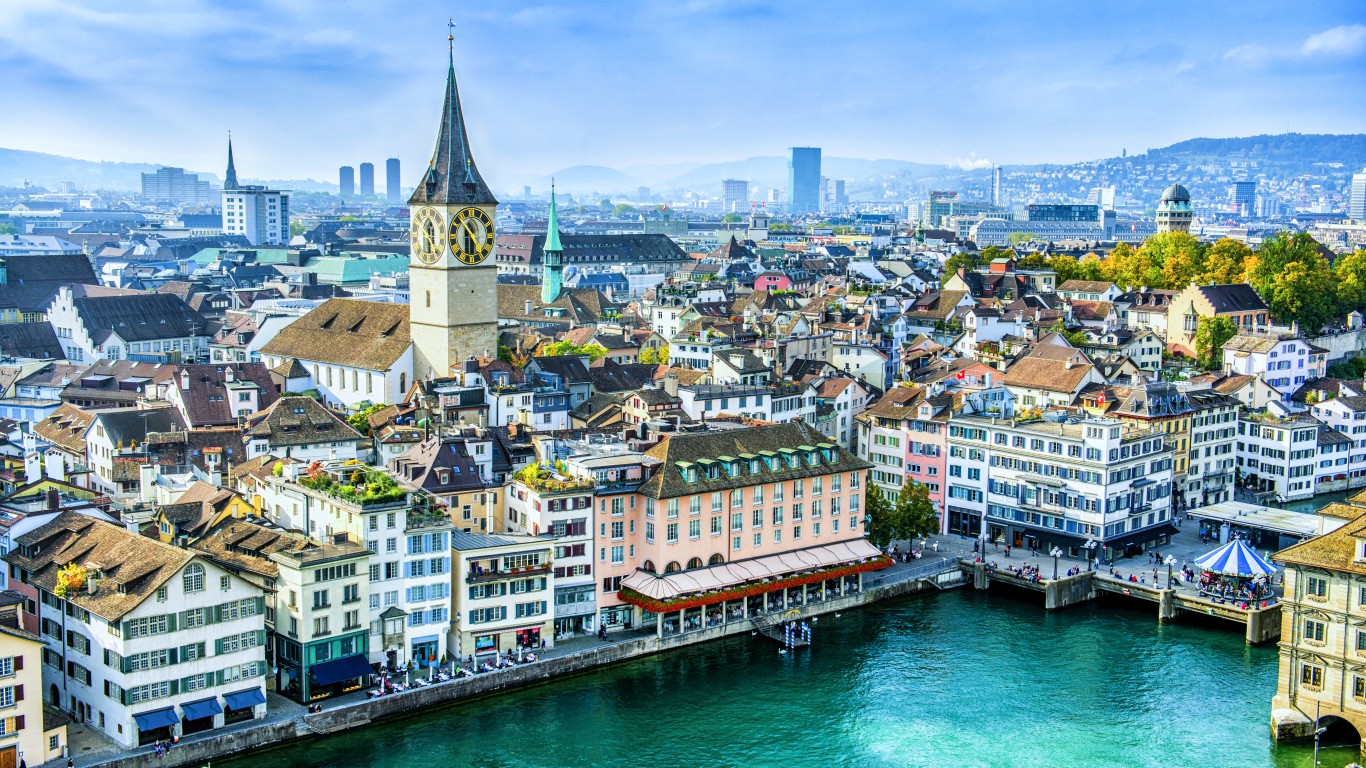
10. Switzerland
> GNI per capita: $58,138
> 2018 GDP: $705.5 billion (21st out of 208 countries)
> Population (2018): 8.5 million
> Life expectancy at birth in 2016: 83.6 years
One of the richest countries in the world, Switzerland has a GNI per capita of $58,138. Though it has a fairly diverse economy, gold is a major source of the nation’s wealth. Refineries in Switzerland process an estimated 70% of the world’s unrefined gold each year. The country’s banking sector is also somewhat infamous for serving as a tax haven for the world’s wealthy elite, although the nation has taken steps to reform its banking secrecy laws to close some loopholes.
[in-text-ad]

9. Hong Kong SAR, China
> GNI per capita: $60,221
> 2018 GDP: $363.0 billion (37th out of 208 countries)
> Population (2018): 7.5 million
> Life expectancy at birth in 2017: 84.7 years
Hong Kong is a free market economy located on the southern coast of China. The former British colony and now special administrative region of China, has a major trade-based economy, and China is its largest partner by far. Hong Kong’s relationship with China has strained recently after demonstrations in Hong Kong erupted in response to China trying to tighten the region’s autonomy.

8. Luxembourg
> GNI per capita: $65,101
> 2018 GDP: $69.5 billion (74th out of 208 countries)
> Population (2018): 607,728
> Life expectancy at birth in 2016: 82.7 years
Luxembourg is one of the smallest countries in the world, both in terms of landmass and population, with barely 600,000 people. With a GDP of $69.5 billion, Luxembourg’s GNI per capita is one of the highest in the world, at $65,101.
No country relies more heavily on trade than the small European country. The total value of goods and services imported and exported in Luxembourg is equal to more than four times the country’s GDP. The nation’s largest exports are cars, petroleum, and diamonds.
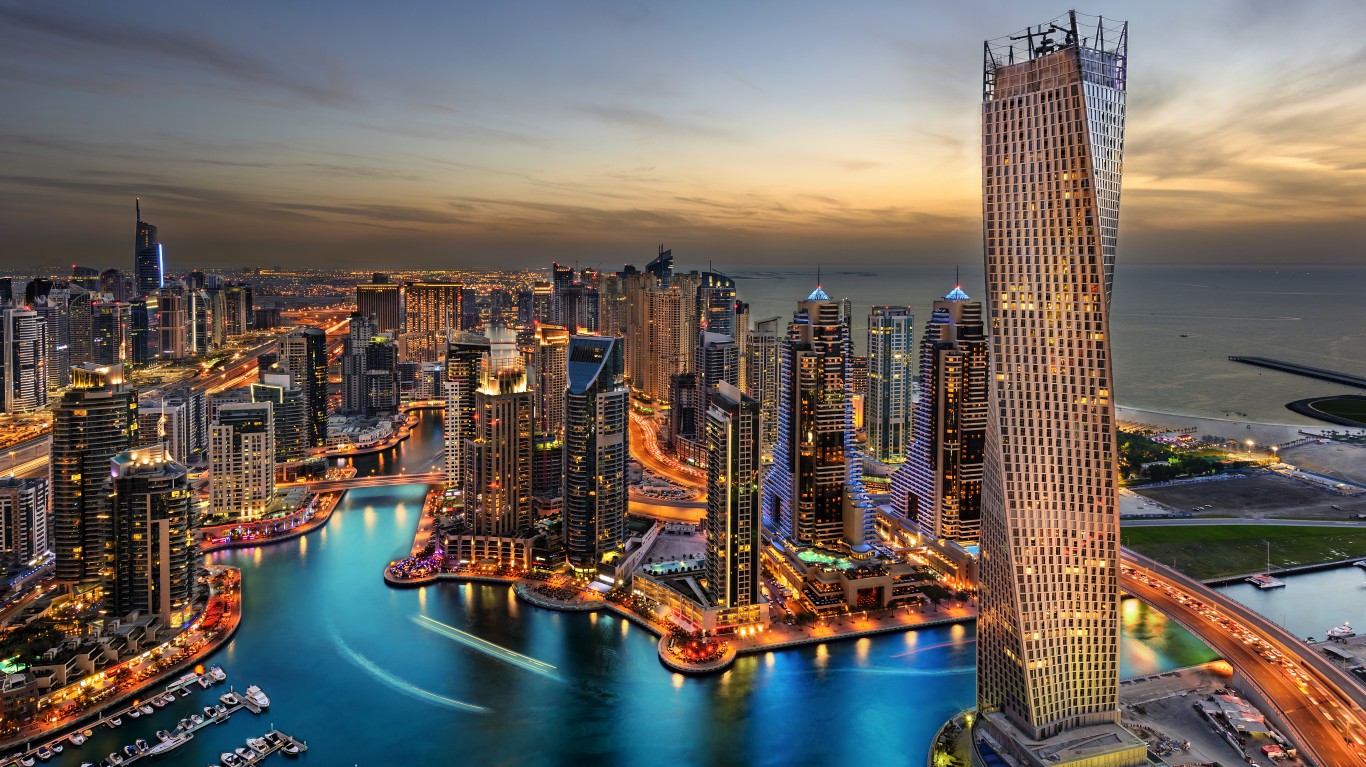
7. United Arab Emirates
> GNI per capita: $67,136
> 2018 GDP: $414.2 billion (31st out of 208 countries)
> Population (2018): 9.6 million
> Life expectancy at birth in 2017: 77.6 years
Nearly half of all exports from the United Arab Emirates are forms of petroleum — crude, refined, and petroleum gas. The country’s exports also include precious metals and minerals like gold and diamonds. These valuable exports have helped make the UAE one of the wealthiest countries in the world, with a GNI per capita of $67,136. The UAE has one of the lowest unemployment rates in the world, at 2.6%.
[in-text-ad-2]
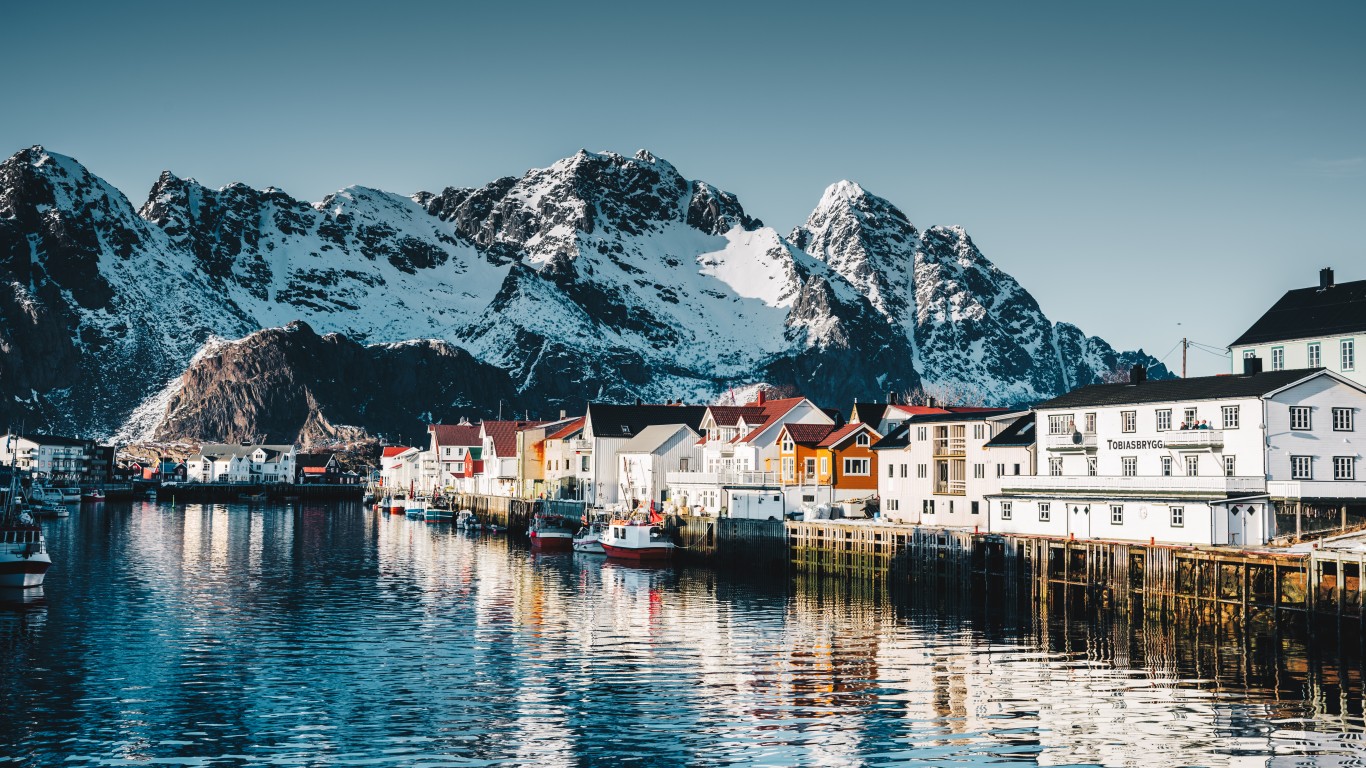
6. Norway
> GNI per capita: $68,059
> 2018 GDP: $434.8 billion (30th out of 208 countries)
> Population (2018): 5.3 million
> Life expectancy at birth in 2017: 82.5 years
Norway has the highest GNI per capita in Europe, at $68,059. The Scandinavian nation is rich in natural resources, including oil, which accounts for more than half of the nation’s total exports. Norway has one of the longest-lived population of any country worldwide, with a life expectancy of 82.5 years, which is four years longer than the U.S. life expectancy, and over a decade longer than the worldwide life expectancy.

5. Kuwait
> GNI per capita: $73,742
> 2018 GDP: $141.7 billion (59th out of 208 countries)
> Population (2018): 4.1 million
> Life expectancy at birth in 2017: 75.3 years
Kuwait is one of just a handful of nations with a GNI per capita above $70,000. Kuwait’s economy is heavily reliant on petroleum. Petroleum accounts for more than 84% of its exports. Kuwait has seen a substantial decline in wealth in the past few years due in part to the global drop in oil prices.
[in-text-ad]

4. Brunei Darussalam
> GNI per capita: $77,188
> 2018 GDP: $13.6 billion (131st out of 208 countries)
> Population (2018): 428,962
> Life expectancy at birth in 2017: 75.6 years
Petroleum accounts for more than 90% of Brunei’s exports. As a result of its petroleum resources, the relatively small Southeast Asian nation, found on the island of Borneo, has become one of the world’s wealthiest, with a GNI per capita in excess of $77,000. Citizens of the country do not have to pay income taxes.

3. Singapore
> GNI per capita: $83,793
> 2018 GDP: $364.2 billion (36th out of 208 countries)
> Population (2018): 5.6 million
> Life expectancy at birth in 2017: 82.9 years
Sitting on the southern edge of Malaysia, Singapore is an important port, connecting much of mainland Asia to the rest of the world. Singapore is one of the largest exporters of integrated circuits in the world, accounting for over one-third of the country’s total exports, with other electronics accounting for a substantial portion of exports as well.

2. Macao SAR, China
> GNI per capita: $95,833
> 2018 GDP: $54.5 billion (84th out of 208 countries)
> Population (2018): 631,636
> Life expectancy at birth in 2017: 84.0 years
With a GNI per capita of over $95,000, Macao is one of the wealthiest places worldwide. Like Hong Kong, Macao is another special administrative region of China. It has become one of the world’s top gaming destinations, and the sector has pumped billions of dollars into the economy of this relatively small region. Life expectancy in Macao is 84 years at birth, one of the highest of any country, and 5.5 years above U.S. life expectancy.
[in-text-ad-2]

1. Qatar
> GNI per capita: $113,133
> 2018 GDP: $192.0 billion (55th out of 208 countries)
> Population (2018): 2.8 million
> Life expectancy at birth in 2017: 80.0 years
Qatar is, by far, the richest country in the world, with a GNI per capita of $113,133 — more than $17,000 higher than the second wealthiest nation, Macao. Like Saudi Arabia and the United Arab Emirates, much of Qatar’s wealth comes from its oil and natural gas sector. Petroleum accounts for over 85% of Qatar’s total exports. Qatar has nearly 14% of the world’s proven natural gas reserves.
The thought of burdening your family with a financial disaster is most Americans’ nightmare. However, recent studies show that over 100 million Americans still don’t have proper life insurance in the event they pass away.
Life insurance can bring peace of mind – ensuring your loved ones are safeguarded against unforeseen expenses and debts. With premiums often lower than expected and a variety of plans tailored to different life stages and health conditions, securing a policy is more accessible than ever.
A quick, no-obligation quote can provide valuable insight into what’s available and what might best suit your family’s needs. Life insurance is a simple step you can take today to help secure peace of mind for your loved ones tomorrow.
Click here to learn how to get a quote in just a few minutes.
Thank you for reading! Have some feedback for us?
Contact the 24/7 Wall St. editorial team.